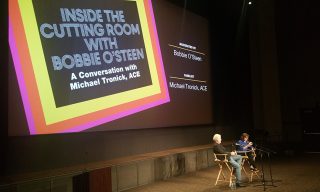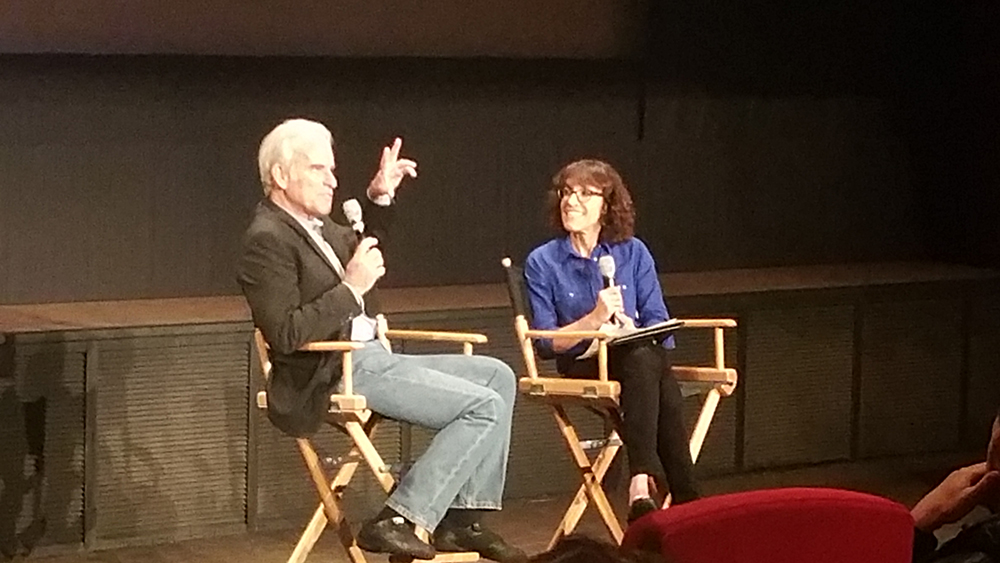
Michael Tronick, ACE, is a motion picture editor in every sense, but his experience as a music editor has influenced his career in ways that even he is surprised to still see resonating. There are few editors inside or outside of Hollywood who have a better sense of how music can impact a story and audience, but exploring that relationship was just one of the topics of discussion during the Inside the Cutting Room with Bobbie O’Steen session at EditFest 2016.
This panel was a one-on-one discussion between Michael Tronick and journalist Bobbie O’Steen, a New York-based writer and film historian. It was the third of four panel discussions, and we’ll be taking a quick look at what kind of information was shared and discussed in each…
- Cutting it in Hollywood
- Cult Film Favorites
- Inside the Cutting Room with Bobbie O’Steen
- The Lean Forward Moment
…and the full video of this session is available at the bottom of this entry.
During this session, O’Steen drilled into specific detail with Tronick to discuss his history in the industry, how the tools and his perspective in the editing room have changed, what it’s meant to him to approach editing with such a focus on music and plenty more.

Tronick discussed various mentors of his that had such a big influence on his career, and those people include Dan Carlin Sr., Tom Rolph and Billy Webber, but it was the little things that were the most important to him. When he questioned whether or not he should say something to a director, and to tell them what he really believed, these were the people who helped him realize that an honest assessment was absolutely something he needed to share. He also talked about the odd shift he experienced when he realized those sorts of people were no longer in the edit suite with him, and he was now in that role for the people working alongside and under him.
What the process of editing looks like for Tronick as well as the people he’s worked with was also a major topic of discussion, and he made sure to highlight the fact that everyone has a different process. He found himself having to sort through 18,000 feet of footage of a dog on Midnight Run, and being able to do so was an important part of director Martin Brest’s process. Seeing and learning from that process was something essential to the development of the approach Tronick takes to this day.
To get specific about what it means to cut to music, Tronick showed the audience scenes from both Scent of a Woman and All that Jazz. Each of those scenes displayed how his experience as a music editor informed his insights as a picture editor, and the sense of rhythm the scenes contain was evident, which he discussed in detail.
Later he showed scenes from both Hairspray and Straight Out of Compton, in a juxtaposition that was incredibly stark. Nonetheless, it was easy to see how he was able to use the music that is an essential part of each scene to tell a story about these characters that is incredibly relevant to those individual scenes as well as to the film as a whole.

Watch a video of the entire Inside the Cutting Room with Bobbie O’Steen session below.
